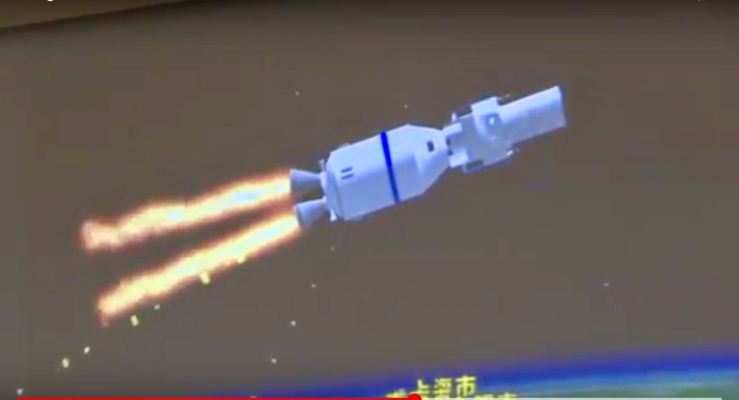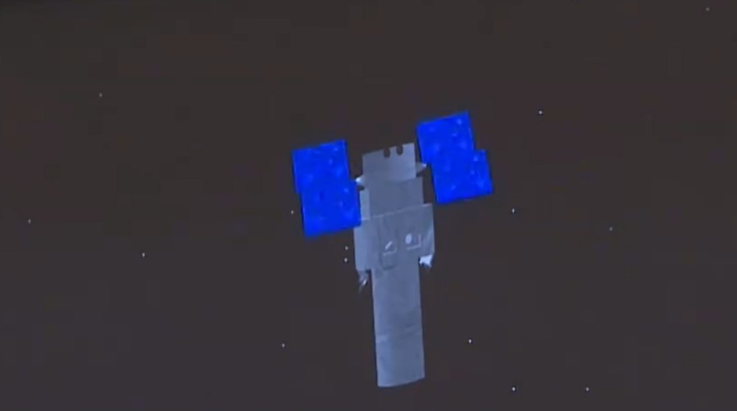You are using an out of date browser. It may not display this or other websites correctly.
You should upgrade or use an alternative browser.
You should upgrade or use an alternative browser.
China Ballistic Missiles and Nuclear Arms Thread
- Thread starter peace_lover
- Start date
- Status
- Not open for further replies.
Maybe you don't realise but this is a deeply political view reflecting your worldview of your country in the hierarchy .There are plenty of choke points in the 1st and 2nd island chain to interdict shipping bound for China. You don’t even need a carrier to do that.
CSGs would be around to make sure PLAN doesn’t go anywhere beyond the 1st island chain. A naval blockade is a very realistic prospect.
So is having all your LEO satellites shot down.
Not the viewpoint of a country in the 1st/2nd island chain whom has a mammoth , 1.3 billion neighbourhood , and have a request from a country 10000 km away to poke the dragon with a stick : )
What do you all think about the effectiveness of using diesel submarines to break a naval blockade? It's been proven that the American navy has enormous trouble with these submarines. In a war, why not place a few submarines near Singapore to sink the carriers?
I know that diesel submarines have limited range, but the Type 039A is said to have a range of 15K kilometers, which is more than enough.
How realistic is this?
I know that diesel submarines have limited range, but the Type 039A is said to have a range of 15K kilometers, which is more than enough.
How realistic is this?
Word is a Japanese source says PLAN is about to run a JL-3 test from potentially a Type 096 in Bohai soon.
JL-3 is 12,000km range, 10 MIRV SLBM.
I'm still trying to find the original source.
I doubt that part...
The source specifically said submerged test. Has there been submerged launch test previously on another class? I haven't been following JL-3 news previously.I doubt that part...
The source specifically said submerged test. Has there been submerged launch test previously on another class? I haven't been following JL-3 news previously.
The PLAN has a dedicated test submarine; search up "032 submarine"
Fair enough, it's probably that then.The PLAN has a dedicated test submarine; search up "032 submarine"
Fair enough, it's probably that then.
Almost certainly.
Other possibilities for submerged tests of sub launched missiles include dedicated underwater launch platforms.
But we can easily rule out the 09VI as a possibility because the first boat isn't even in the water -- frankly we don't even know if construction on the first boat has even began yet.
Hendrik_2000
Lieutenant General
Now for me this is more exciting than the space plane launch.
This propels China into the select club of countries that can acquire satellite imagery, meaning the resolution is high enough to identify small hand-held weapons. Presumably the only members of this club are the US and now China, and that will continue to be the case in the foreseeable future, with maybe Russia joining them later if the program fulfills its promises.
Here is the video
The most interesting part is this image of the satellite still attached to the third stage of the Long March rocket.

Knowing the stage has a diameter of 2.9m, and is almost completely parallel to the virtual camera, the diameter of the satellite’s aperture can be estimated at 1.7m. That means it carries a big mirror: the largest mirror carried by a commercial Earth Observation satellite is Worldview 3 & 4 ‘s 1.1m mirror, manufactured in the USA by ITT Exelis. For non-commercial satellites, the French have published images of their Helios 2 spy satellites, suggesting they have a 1.4m mirror. GF-1 beats them all, and is in fact only outclassed in its category of an optical imaging satellite by two US products:
– the Hubble Space Telescope, which has a 2.4m mirror working at optical wavelengths
– the KENNEN optical spy satellites, generally known under the KH-11 designation, which are rumoured to have a similar mirror size to Hubble. This is supported by the fact that the National Reconnaissance Office gifted two 2.4m optical mirrors it no longer had use for to NASA, which plans to use it for its WFIRST observatory. Additionally, people who have seen high-resolution images of these satellites have described them as ““.
Artist’s view of a KH-11 based on a modified Hubble image. Credit The Space Teview
The Hubble Space Telescope
So China seems to have accomplished a great leap forward in space optics. As GF-11 is positioned on a 470km circular 247x693km elliptical orbit, a 1.7m mirror would give it a ground resolution of 8 to 10cm at perigee, at around 10AM local solar time and at 20°N, right over India and the South China Sea. At the average altitude of 470km, the resolution is still 15 to 20cm, surpassing all commercial satellites and most reconnaissance satellites. This propels China into the select club of countries that can acquire satellite imagery, meaning the resolution is high enough to identify small hand-held weapons. Presumably the only members of this club are the US and now China, and that will continue to be the case in the foreseeable future, with maybe Russia joining them later if the program fulfills its promises.
 Another view of GF-11, showing a similar architecture to Hubble
Another view of GF-11, showing a similar architecture to Hubble
This propels China into the select club of countries that can acquire satellite imagery, meaning the resolution is high enough to identify small hand-held weapons. Presumably the only members of this club are the US and now China, and that will continue to be the case in the foreseeable future, with maybe Russia joining them later if the program fulfills its promises.
Here is the video
The most interesting part is this image of the satellite still attached to the third stage of the Long March rocket.

Knowing the stage has a diameter of 2.9m, and is almost completely parallel to the virtual camera, the diameter of the satellite’s aperture can be estimated at 1.7m. That means it carries a big mirror: the largest mirror carried by a commercial Earth Observation satellite is Worldview 3 & 4 ‘s 1.1m mirror, manufactured in the USA by ITT Exelis. For non-commercial satellites, the French have published images of their Helios 2 spy satellites, suggesting they have a 1.4m mirror. GF-1 beats them all, and is in fact only outclassed in its category of an optical imaging satellite by two US products:
– the Hubble Space Telescope, which has a 2.4m mirror working at optical wavelengths
– the KENNEN optical spy satellites, generally known under the KH-11 designation, which are rumoured to have a similar mirror size to Hubble. This is supported by the fact that the National Reconnaissance Office gifted two 2.4m optical mirrors it no longer had use for to NASA, which plans to use it for its WFIRST observatory. Additionally, people who have seen high-resolution images of these satellites have described them as ““.
Artist’s view of a KH-11 based on a modified Hubble image. Credit The Space Teview
The Hubble Space Telescope
So China seems to have accomplished a great leap forward in space optics. As GF-11 is positioned on a 470km circular 247x693km elliptical orbit, a 1.7m mirror would give it a ground resolution of 8 to 10cm at perigee, at around 10AM local solar time and at 20°N, right over India and the South China Sea. At the average altitude of 470km, the resolution is still 15 to 20cm, surpassing all commercial satellites and most reconnaissance satellites. This propels China into the select club of countries that can acquire satellite imagery, meaning the resolution is high enough to identify small hand-held weapons. Presumably the only members of this club are the US and now China, and that will continue to be the case in the foreseeable future, with maybe Russia joining them later if the program fulfills its promises.

- Status
- Not open for further replies.
